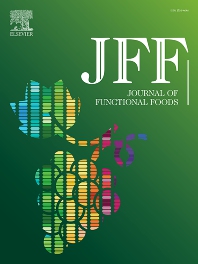
Characterization of novel calcium compounds from tilapia (Oreochromis niloticus) by-products and their effects on proliferation and differentiation of MC3T3-E1 cells (2023)
Title : Characterization of novel calcium compounds from tilapia (Oreochromis niloticus) by-products and their effects on proliferation and differentiation of MC3T3-E1 cells
Researcher : Chakkapat Aenglong, Nujamee Ngasakul, Maruj Limpawattana, Wanida Sukketsiri, Suwimol Chockchaisawasdee, Costas Stathopoulos, Supita Tanasawet, Wanwimol Klaypradit
Department : สำนักอธิการบดี มหาวิทยาลัยสยาม
E-mail : maruj.lim@siam.edu
ฐานข้อมูลงานวิจัย มหาวิทยาลัยสยาม : –
Link to article: Journal of Functional Foods, 2023, 100, 105361. https://doi.org/10.1016/j.jff.2022.105361
Journal : Journal of Functional Foods / in Scopus
Bibliography : Aenglong, C., Ngasakul, N.,Limpawattana, M., Sukketsiri, W., Chockchaisawasdee, S.,Stathopoulos, C., Tanasawet, S., & Klaypradit, W. (2023). Characterization of novel calcium compounds from tilapia (Oreochromis niloticus) by-products and their effects on proliferation and differentiation of MC3T3-E1 cells. Journal of Functional Foods, 100, 105361. https://doi.org/10.1016/j.jff.2022.105361
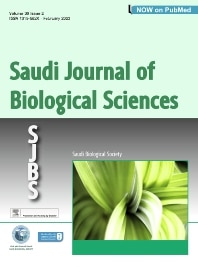
Chemical evaluation and antibacterial activity of novel bioactive compounds from endophytic fungi in Nelumbo nucifera (2020)
Title : Chemical evaluation and antibacterial activity of novel bioactive compounds from endophytic fungi in Nelumbo nucifera
Researcher : Techaoei, S., Jirayuthcharoenkul, C., Jarmkom, K., Dumrongphuttidecha, T., Khobjai, W.
Department :
Abstract : The objective of this study was to characterize an endophytic fungi producing-bioactive compound from the aquatic plant, Nelumbo nucifera. All parts of such plant were cleaned with surface sterilization technique and cultured on potato dextrose agar to isolate endophytic fungi. The identification was characterized by morphological and molecular technique. Fungal isolates were screened to discover antimicrobial activities by disc diffusion method against Methicillin-resistant Staphylococcus aureus DMST20651 (MRSA). MIC and MBC for those crude fungal extracts were determined. Finally, the chemical profile of crude extract was determined by gas chromatography and mass spectrometry. Six endophytic fungi were isolated from the surface-satirized parts of N. nucifera. Based on disc diffusion assay, the highest antibacterial activity against MRSA was isolate ST9.1 identified as Aspergillus cejpii. Results demonstrated that the ethyl acetate extraction had more active fractions with MIC of 2.5 mg/ml and MBC concentration of 50.0 mg/ml. The crude extracts were developed to identify the chemical constituents by gas chromatography and mass spectrometry. The major component of crude extract of endophytic fungi was 5-(1H-Indol-3-yl)-4,5-dihydro-[1,2,4]triazin-3-ylamine (C11H11N5). Thus, the plant could be used in the treatment of infectious diseases caused by bacterial pathogen.
Keywords: Antimicrobial activity, N. nucifera, Methicillin-resistant S. aureus, Endophytic fungi
Link to Academic article: https://doi.org/10.1016/j.sjbs.2020.08.037
Journal : Saudi Journal of Biological Sciencesthis, 2020, 27(11)
Bibliography : Techaoei, S., Jirayuthcharoenkul, C., Jarmkom, K., Dumrongphuttidecha, T., & Khobjai, W. (2020). Chemical evaluation and antibacterial activity of novel bioactive compounds from endophytic fungi in Nelumbo nucifera. Saudi Journal of Biological Sciencesthis, 27(11), 2883–2889. Retrieved from https://doi.org/10.1016/j.sjbs.2020.08.037
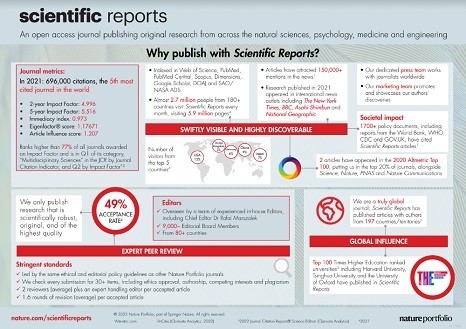
Citrate pharmacokinetics in critically ill liver failure patients receiving CRRT (2022)
Title : Citrate pharmacokinetics in critically ill liver failure patients receiving CRRT
Researcher : Thanapongsatorn, P., Chaijamorn, W.,[mfn]1[/mfn] Sirivongrangson, P., …Lucksiri, A., Srisawat, N.
Department : 1Faculty of Medicine, Siam University, Bangkok, Thailand
Abstract : Citrate has been proposed as anticoagulation of choice in continuous renal replacement therapy (CRRT). However, little is known about the pharmacokinetics (PK) and metabolism of citrate in liver failure patients who require CRRT with regional citrate anticoagulation (RCA). This prospective clinical PK study was conducted at King Chulalongkorn Memorial Hospital between July 2019 to April 2021, evaluating seven acute liver failure (ALF) and seven acute-on-chronic liver failure (ACLF) patients who received CRRT support utilizing RCA as an anticoagulant at a citrate dose of 3 mmol/L. For evaluation of the citrate PK, we delivered citrate for 120 min and then stopped for a further 120 min. Total body clearance of citrate was 152.5 ± 50.9 and 195.6 ± 174.3 mL/min in ALF and ACLF, respectively. The ionized calcium, ionized magnesium, and pH slightly decreased after starting citrate infusion and gradually increased to baseline after stopping citrate infusion. Two of the ACLF patients displayed citrate toxicity during citrate infusion, while, no ALF patient had citrate toxicity. In summary, citrate clearance was significantly decreased in critically ill ALF and ACLF patients receiving CRRT. Citrate use as an anticoagulation in these patients is of concern for the risk of citrate toxicity.
Link to Academic article: https://www.nature.com/articles/s41598-022-05867-8
Journal : Scientific Reports,
Bibliography : Thanapongsatorn, P., Chaijamorn, W., Sirivongrangson, P., Tachaboon, S., Peerapornratana, S., Lumlertgul, N.,…Srisawat, N. (2022). Citrate pharmacokinetics in critically ill liver failure patients receiving CRRT. Scientific Reports, 12(1), 1815.
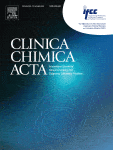
Clinical and molecular characteristics of FMR1 microdeletion in patient with fragile X syndrome and review of the literature (2024)
Title : Clinical and molecular characteristics of FMR1 microdeletion in patient with fragile X syndrome and review of the literature
Researcher : Areerat Hnoonual, Oradawan Plong-On, Juthamas Worachotekamjorn, Chariyawan Charalsawadi, Pornprot Limprasert
Abstract : Background: Fragile X syndrome (FXS) is mainly caused by FMR1 CGG repeat expansions. Other types of mutations, particularly deletions, are also responsible for FXS phenotypes, however these mutations are often missed by routine clinical testing.
Materials and methods: Molecular diagnosis in cases of suspected FXS was a combination of PCR and Southern blot. Measurement of the FMRP protein level was useful for detecting potentially deleterious impact.
Results: PCR analysis and Southern blot revealed a case with premutation and suspected deletion alleles. Sanger sequencing showed that the deletion involved 313 bp upstream of repeats and some parts of CGG repeat tract, leaving transcription start site. FMRP was detected in 5.5 % of blood lymphocytes.
Conclusion: According to our review of case reports, most patients carrying microdeletion and full mutation had typical features of FXS. To our knowledge, our case is the first to describe mosaicism of a premutation and microdeletion in the FMR1 gene. The patient was probably protected from the effects of the deletion by mosaicism with premutation allele, leading to milder phenotype. It is thus important to consider appropriate techniques for detecting FMR1 variants other than repeat expansions which cannot be detected by routine FXS diagnosis.
Keywords: Deletion; FMR1; Fragile X syndrome; Mosaicism; Premutation.
Link to article : Clinica Chimica Acta, 2024, 553, 117728. https://doi.org/10.1016/j.cca.2023.117728
Journal : Clinica Chimica Acta / in Scopus
Citation : Hnoonual, A., Plong-On, O., Worachotekamjorn, J., Charalsawadi, C., Limprasert, P. (2024). Clinical and molecular characteristics of FMR1 microdeletion in patient with fragile X syndrome and review of the literature. Clinica Chimica Acta, 553, 117728. https://doi.org/10.1016/j.cca.2023.117728
ฐานข้อมูลงานวิจัย มหาวิทยาลัยสยาม : –
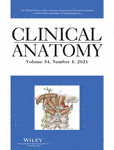
Clinical implications of the arterial supplies and their anastomotic territories in the nasolabial region for avoiding arterial complications during soft tissue filler injection (2021)
Title : Clinical implications of the arterial supplies and their anastomotic territories in the nasolabial region for avoiding arterial complications during soft tissue filler injection
Researcher : Jitaree, B., Phumyoo, T., Uruwan, S., …Pratoomthai, B., Tansatit, T.
Abstract : Introduction: The nasolabial fold (NLF) causes particular concern during aging in the middle face region. However, arterial complications of filler injections at this site have been continually reported during recent years. The aim of this study was to investigate the arterial locations and their anastomotic pathways related to filler injection sites in the NLF.
Materials and methods: Thirty hemi-faces of 15 embalmed Thai cadavers were dissected. Three anatomical landmarks of NLFs were assigned: the inferior margin level (NLF1), the mid-philtral horizontal line level (NLF2), and the inferior alar level (NLF3). Ten hemi-faces of five soft embalmed Thai cadavers underwent a modified Sihler’s staining procedure to investigate the arterial anastomoses.
Results: The artery closest to all of the landmarks was the facial artery. It was located inferomedial to NLF1 in 28%, and the mean distances along the X- and Y-axes were 3.53 ± 2.11 mm and 3.53 ± 1.75 mm, respectively. It was also located medial to NLF2 in 52.1% with an X-axis distance of 4.93 ± 1.53 mm. Several arteries were located close to NLF3, including the facial (33.3%), lateral nasal (33.3%), and infraorbital (30.0%) arteries. Anastomoses of the nasolabial arteries served to connect both the external–external and internal–external carotid systems.
Conclusions: Several arteries are located close to NLF1–NLF3. To prevent arterial injury, the locations and anastomotic pathways, as possible sources of severe complications, should be recognized prior to NLF filler injection.
Link to Academic article: https://doi.org/10.1002/ca.23617
Journal : Clinical Anatomy, 2021, 34(4).
Bibliography : Jitaree, B., Phumyoo, T., Uruwan, S., Jiirasutat, N., Pratoomthai, B., & Tansatit, T.(2021). Clinical implications of the arterial supplies and their anastomotic territories in the nasolabial region for avoiding arterial complications during soft tissue filler injection. Clinical Anatomy, 34(4), 581–589.

Clinical practice guideline for diagnosis and management of urticaria (2016)
Title : Clinical practice guideline for diagnosis and management of urticaria
Researcher : Clin.Prof.Suwat Benjaponpitak
Department : Faculty of Medicine, Siam University, Bangkok, Thailand
E-mail : med@siam.edu
Abstract : Urticaria is a common skin condition that can compromise quality of life and may affect individual performance at work or school. Remission is common in majority of patients with acute spontaneous urticaria (ASU); however, in chronic cases, less than 50% had remission. Angioedema either alone or with urticaria is associated with a much lower remission rate. Proper investigation and treatment is thus required. This guideline, a joint development of the Dermatological Society of Thailand, the Allergy, Asthma, and Immunology Association of Thailand and the Pediatric Dermatological Society of Thailand, is graded and recommended based on published evidence and expert opinion. With simple algorithms, it is aimed to help guiding both adult and pediatric physicians to better managing patients who have urticaria with/without angioedema. Like other recent guideline, urticaria is classified into spontaneous versus inducible types. Patients present with angioedema or angioedema alone, drug association should be excluded, acetyl esterase inhibitors (ACEIs) and non-steroidal anti-inflammatory drugs (NSAIDs) in particular. Routine laboratory investigation is not cost-effective in chronic spontaneous urticaria (CSU), unless patients have clinical suggesting autoimmune diseases. Non-sedating H1-antihistamine is the first-line treatment for 2-4 weeks; if urticaria was not controlled, increasing the dose up to 4 times is recommended. Sedating first-generation antihistamines have not been proven more advantage than non-sedating antihistamines. The only strong evidence-based alternative regimen for CSU is an anti-IgE: omalizumab; due to very high cost it however might not be accessible in low-middle income countries. Non-pharmacotherapeutic means to minimize hyper-responsive skin are also important and recommended, such as prevention skin from drying, avoidance of hot shower, scrubbing, and excessive sun exposure.
Link to Academic article: https://pubmed.ncbi.nlm.nih.gov/27690471/
Journal : Asian Pacific journal of allergy and immunology Volume 34 Number 3 September 2016
Bibliography : Kulthanan, K., Tuchinda, P., Chularojanamontri, L., Chanyachailert, P., Korkij, W., Chunharas, A., Wananukul, S., Limpongsanurak, W., Benjaponpitak, S., Wisuthsarewong, W., Aunhachoke, K., Wessagowit, V., Chatchatee, P., Wattanakrai, P., Jirapongsananuruk, O., Klaewsongkram, J., Noppakun, N., Vichyanond, P., Suthipinittharm, P., Ruxrungtham, K., Singalavanija, S., & Ngamphaiboon, J. (2016). Clinical practice guideline for diagnosis and management of urticaria. Asian Pac J Allergy Immunol, 34(3), 190-200.

Clinically significant drug interactions among HIV-infected patients receiving antiretroviral therapy (2014)
Abstract
We conducted a cross sectional study of the outpatient medical records of 1,000 HIV-infected patients receiving antiretroviral therapy (ART) in 2011 to determine the incidence of clinically significant drug interactions (CSDI). The severities of the CSDI were graded following the Micromedex® 2.0 database and the Department of Health and Human Services (DHHS) 2012 HIV treatment guidelines. Three hundred thirty-five patients (34%) had 554 episodes of CSDI. Of which 337 episodes (61%), 163 episodes (29%) and 54 episodes (10%) had grades 2, 3 and 4 severity CSDI, respectively. The CSDI were caused by protease inhibitor (PI)-based drug regimens in 79%, by efavirenz-based regimens in 34% and by nevirapine-based regimens in 10% (p<0.001). The three most common grade 4 CSDI were: a PI with simvastatin (n=24), simvastatin with gemfibrozil (n=24) and didanosine with allopurinol (n=2). The three most common grade 3 CSDI were: a PI with a statin drug except simvastatin (n=56), fenofibrate with a statin drug (n=28) and amlodipine with simvastatin (n=14). On multivariate analysis, risk factors associated with CSDI were: receiving a PI-based regimen (OR 14.44; 95%CI: 9.10-22.88), having dyslipidemia (OR 3.94; 95%CI: 1.89-8.21), having >5 items prescribed at a time (OR 1.80; 95%CI: 1.23-2.63), seeing a doctor >4 times a year (OR 1.72; 95%CI: 1.20-2.46), having hypertension (OR 0.60; 95%CI: 0.37-0.98), having a duration of receiving ART of >5 years (OR 0.46; 95%CI: 0.28-0.77) and having a CD4 count of >200 cells/mm3 (OR 0.46; 95%CI: 0.26-0.84). CSDI were common among HIV-infected patients receiving ARV in our outpatient clinic. Patients having a low CD4 count, having dyslipidemia, receiving PI-based ART, having a frequent number of visits per year and having a large number of items prescribed at each visit had a greater chance of a CSDI.
Keywords: antiretroviral, drug interaction, HIV, Thailand
Link to Publication: http://www.tm.mahidol.ac.th/seameo/journal-45-5-2014.html / in Scopus
Bibliography : So-Ngern, A., Montakantikul, P. & Manosuthi, W. (2014). Clinically significant drug interactions among HIV-infected patients receiving antiretroviral therapy. Southeast Asian J Trop Med Public Health, 45(5), 1023-1031.
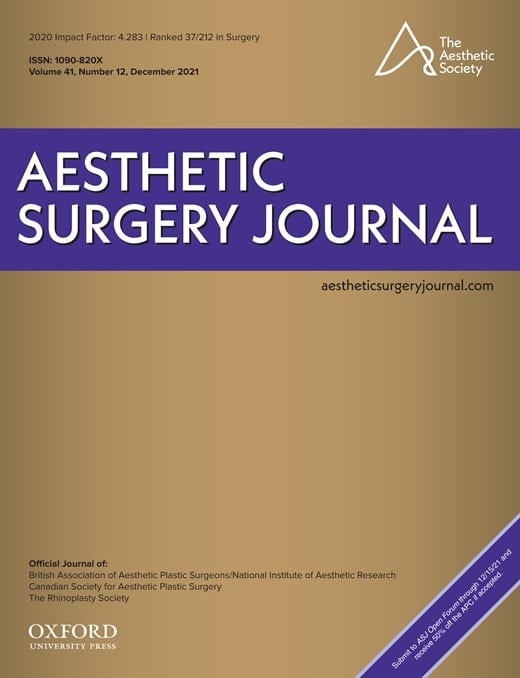
Commentary on: Deployment of the Ophthalmic and Facial Angiosomes in the Upper Nose Overlaying the Nasal Bones (2021)
Title : Commentary on: Deployment of the Ophthalmic and Facial Angiosomes in the Upper Nose Overlaying the Nasal Bones
Researcher : Tansatit, T., Phumyoo, T., Jitaree, B., Rungsawang, C., Uruwan, S.
Abstract : The authors studied patterns of nasal angiosomes focusing on the arterial sources of the upper nose and the midline anastomoses employing 3-dimensional reconstructed computed tomography imaging with radiopaque enhancement in 62 fresh cadaver heads.1 Unfortunately, the presence of subcutaneous plexuses interfered with visualization of the deep arteries. After some technical adjustment, only 26 cadaver noses were available for analysis. The authors carefully classified nasal arterial patterns into 3 types with additional 7 subtypes. Besides their fantastic work, the authors transferred their findings into clinical practice and estimated blindness risks. Some additional issues of blindness risks are further discussed in this comment for more clarification.
Link to Academic article: https://doi.org/10.1093/asj/sjaa397
Journal : Aesthetic Surgery Journal, 2021, 41(12).
Bibliography : Tansatit, T., Phumyoo, T., Jitaree, B., Rungsawang, C., & Uruwan, S. (2021). Commentary on: Deployment of the Ophthalmic and Facial Angiosomes in the Upper Nose Overlaying the Nasal Bones. Aesthetic Surgery Journal, 41(12), NP1986–NP1988. https://doi.org/10.1093/asj/sjaa397
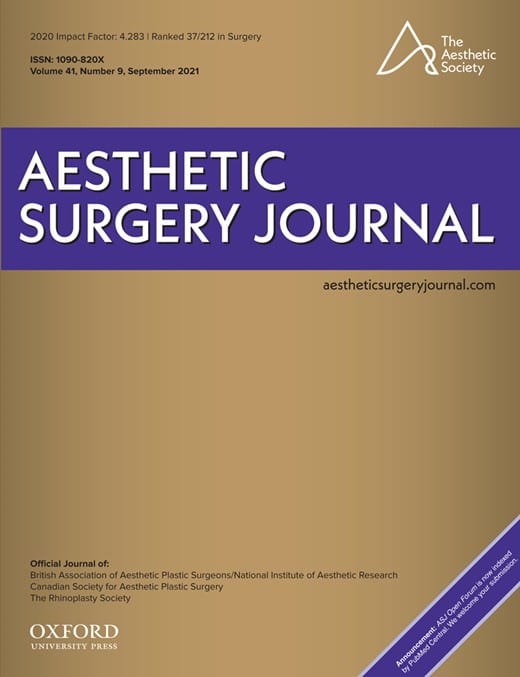
Commentary on: Safe Glabellar Wrinkle Correction with Soft Tissue Filler Using Doppler Ultrasound (2021)
Title : Commentary on: Safe Glabellar Wrinkle Correction with Soft Tissue Filler Using Doppler Ultrasound
Researcher : Phumyoo, T., Tansatit, T., Jitaree, B.
Abstract : The authors suggest that Doppler ultrasound can be used to locate the supratrochlear artery before hyaluronic acid filler injection at the glabellar wrinkles to avoid ophthalmologic complications.1 In 42 patients with 74 glabellar wrinkle lines, they reported that the supratrochlear arteries were located both at the glabellar wrinkle lines (30/74, 41%) and lateral to the glabellar wrinkle lines (44/74, 59%). They abandoned filler injection in patients whose supratrochlear artery was located at the glabellar wrinkle lines. In these 30 potentially at-risk glabellar lines, the artery was located at the deep subcutaneous layer in 24 and at the subdermal layer in 6 wrinkle lines.
Link to Academic article: https://doi.org/10.1093/asj/sjaa326
Journal : Aesthetic Surgery Journal, 2021, 41(9).
Bibliography : Phumyoo, T., Tansatit, T., & Jitaree, B. (2021). Commentary on: Safe Glabellar Wrinkle Correction with Soft Tissue Filler Using Doppler Ultrasound. Aesthetic Surgery Journal, 41(9), 1090–1093. https://doi.org/10.1093/asj/sjaa326
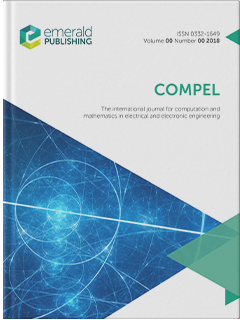
Comparative analyses of electrical circuits with conventional and revisited definitions of circuit elements: a fractional conformable calculus approach (2022)
Title : Comparative analyses of electrical circuits with conventional and revisited definitions of circuit elements: a fractional conformable calculus approach
Researcher : Banchuin, R.
Department : Faculty of Engineering, & Graduated School of IT, Siam University, Bangkok, Thailand
Email : rawid.ban@siam.edu
Abstract :
Purpose
Design/methodology/approach
Findings
Originality/value
Link to article : COMPEL – The International Journal for Computation and Mathematics in Electrical and Electronic Engineering, 2022, 41(1), pp. 258-282. https://doi.org/10.1108/COMPEL-03-2021-0079
Journal : COMPEL – The International Journal for Computation and Mathematics in Electrical and Electronic Engineering / in Scopus
Citation: Banchuin, R. (2022). Comparative analyses of electrical circuits with conventional and revisited definitions of circuit elements: A fractional conformable calculus approach. COMPEL – The International Journal for Computation and Mathematics in Electrical and Electronic Engineering, 41(1), 258-282. https://doi.org/10.1108/COMPEL-03-2021-0079
ฐานข้อมูลงานวิจัย มหาวิทยาลัยสยาม : https://e-research.siam.edu/kb/comparative-analyses-of-electrical-circuits/